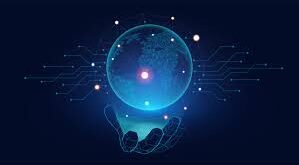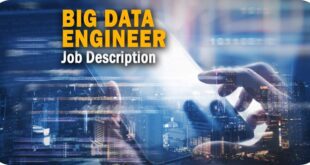What is data science vs. machine learning?
The terms “machine learning” and “data science” are sometimes used interchangeably; nevertheless, they actually perform distinct functions in the field of information technologies. In order to be successful in the field of data-driven decision-making, it is vital for those who are entering the sector to have a thorough awareness of the terminology that is used and the differences that exist between them. Although they are interconnected, each of them involves methodologies, aims, and applications in data analysis and interpretation that are distinct from one another. This is the case, despite the fact that they are interconnected.
Machine Learning vs. Data Science: Top 10 Key Differences Table of Contents What is Data Science vs Machine Learning? Data Science Machine Learning Machine Learning vs Data Science - 10 key differences Applications of machine learning vs data science Toolkit Differences Models and Techniques Hardware Types Lifecycle Process Programming Skills Problem Solving Feedback Loop Data Visualization Data Preparation Conclusion
Data Science:
Data science is an interdisciplinary way of looking at data to find ideas and knowledge. It uses methods from statistics, machine learning, data mining, and subject knowledge to break down big data sets and find useful information.
An organized system called the “data science lifecycle” is at the heart of data science. The first step in this process is to find business problems or questions that can be answered with data. After that, data is collected, cleaned, and preprocessed to make sure it is accurate and useful. The next step is exploratory data analysis (EDA), which uses statistics and graphics tools to find patterns, trends, and connections in the data. After that, machine learning techniques can be used to make prediction models or sort data into groups. Lastly, the ideas that were gathered are evaluated and shared with stakeholders so that they can make better decisions.
Here is a table summarizing the key differences between machine learning and data science:
| Feature | Machine Learning | Data Science |
|---|---|---|
| Focus | Algorithms and models | Data and insights |
| Tools | Programming languages, machine learning libraries | Data visualization tools and statistical software |
| Skills | Programming, mathematics, and statistics | Data wrangling, data analysis, and visualization |
In general, machine learning is more focused on building models that can make predictions, while data science is more focused on understanding data and extracting insights from it. However, the two fields are closely related and often overlap.
Exploring Machine Learning:
Machine learning is a branch of artificial intelligence that focuses on making programs that let computers learn from data and decide what to do or guess on their own. ML systems learn from past data over and over again to find patterns and connections that can be used to make forecasts or put new data points into groups.
There are three main types of machine learning algorithms: controlled, unlabeled, and reinforcement learning. With supervised learning, models are trained on labeled data, and the program learns to guess an output variable based on features of the input data. Unsupervised learning, on the other hand, looks for patterns or structures in data that haven’t been named. On the other hand, reinforcement learning involves learning how to get the most cumulative benefits in a changing world by making mistakes and trying again.
Key Differences between Machine Learning and Data Science:
1. Applications:
Predictive modeling, classification, grouping, and pattern recognition are the main jobs that machine learning does. These programs are useful in many areas, like picture recognition, fraud detection, ranking systems, and natural language processing.
Data science, on the other hand, includes a wider range of tasks, such as gathering, cleaning, analyzing, visualizing, and interpreting data. It can be used in many fields, from finance and healthcare to marketing and hacking, to get useful information from data and help with making big decisions.
2. Toolkit Differences:
For developing algorithms and training models, people who work with machine learning often use specific libraries and tools like TensorFlow, sci-kit-learn, and PyTorch. These tools come with algorithms and functions that are already set up and ready to use for machine learning tasks.
Professionals in data science, on the other hand, use a wider range of technologies and tools, such as databases (SQL and NoSQL), computer languages (Python and R), data visualization tools (Matplotlib and Seaborn), and big data systems (Hadoop and Spark). You must be able to use these tools well in order to manipulate, analyze, and understand data effectively.
3. Models and Techniques:
Making and using methods like decision trees, neural networks, support vector machines, and others is what machine learning is all about. These algorithms learn from labeled data to find trends and connections and guess what will happen with data they haven’t seen yet.
Statistical methods, data mining tools, and machine learning models are just a few of the techniques that are used in data science. Data scientists use a variety of techniques, such as regression analysis, grouping, association rule mining, and dimensionality reduction, to get useful information from data and help people make decisions.
4. Hardware Types:
Machine learning models may need hardware processors like GPUs or TPUs. This is especially true for creating deep learning models, which require a lot of computing power. These accelerations speed up the training process and make the model work better.
Most data science jobs can be done on standard computers, but for big data processing, distributed computing systems may be needed. Most of the time, data scientists use standard computer setups to quickly handle and evaluate data.
5. Lifecycle Process:
Data collection, preprocessing, model training, review, and deployment are all common steps in the machine learning workflow. People who work with machine learning go through this process over and over to improve models and make them better at certain jobs.
There are more steps in the data science process, such as defining the problem, coming up with hypotheses, building features, and figuring out what the results mean. Data scientists study business problems, test theories, and use data to find insights that can be used to make strategic choices.
6. Programming Skills:
Machine learning practitioners necessitate robust programming skills, primarily in languages like Python or R, coupled with proficiency in relevant machine learning libraries and frameworks. They are tasked with coding data, preprocessing pipelines, model training algorithms, and evaluation metrics.
Data science professionals require programming prowess as well, but they also necessitate expertise in data manipulation, statistical analysis, and domain-specific knowledge. They harness programming languages and tools to explore, analyze, and visualize data, discern patterns, and communicate insights to stakeholders effectively.
7. Problem Solving:
Efforts made in the field of machine learning are centered on the resolution of particular prediction or classification problems, often with well-stated target variables or outcomes. Professionals in the field of machine learning concentrate their efforts on improving model performance indicators such as accuracy, precision, and recall. The activities that fall within the purview of data science are more extensive, requiring exploratory data analysis, hypothesis testing, and iterative model refining processes. Data scientists are tasked with the mission of revealing hidden patterns, trends, and correlations within the data in order to facilitate decision-making processes and provide value for businesses.
8. Feedback Loop:
The feedback loop in machine learning is based on model performance measures, like accuracy or loss, which guide attempts to improve the model over and over again. To make models work better, people who work with machine learning try out different algorithms, hyperparameters, and feature engineering methods.
In data science feedback loops, subject knowledge may be added, data collection methods may be improved, or problem formulations may be rethought based on new information gained from data analysis. Data scientists keep going through the stages of the data science process to test their theories and get useful information from the data.
9. Data Visualization:
Data visualization is used in both statistics and data science, but statistics uses images more often to find and share ideas from data. Charts, graphs, and screens are tools that data scientists use to make complicated information easy to understand.
Data representation is mostly used in machine learning to understand model success measures, make features more clear, and set decision limits. Professionals in machine learning use visual model reviews and interpretability methods to learn more about how models work and find ways to make them better.
10. Data Preparation:
Data preparation includes tasks like cleaning, feature engineering, and normalization. It is an important part of both machine learning and data science. People who work with machine learning preprocess data to get rid of noise, deal with missing values, and change features to make models more useful.
Preparing data for exploratory analysis and hypothesis testing is a part of data science. Data scientists clean and change data to find patterns, spot outliers, and get useful information that helps people make decisions and increases the value of the business.
Conclusion:
At their core, machine learning and data science are related fields, but their methods, goals, and uses are different. Machine learning is the study of creating algorithms that can make predictions and help people make decisions. Data science, on the other hand, is a wider field that focuses on getting insights from data and using that information to make strategic decisions. For professionals in the field of data analysis to effectively use the power of data and derive insights that can be put into action, they need to understand these differences.
1. Are data science and machine learning the same thing?
No, they are related but distinct fields. Data science is a broader discipline, while machine learning is a subset focused on creating predictive models.
2. Which programming languages are essential for data science?
Python and R are widely used in data science for data manipulation, analysis, and visualization.
3. What hardware is commonly used in machine learning?
GPUs (Graphics Processing Units) are commonly used in machine learning for efficient model training.
4. How does the feedback loop differ between data science and machine learning?
Data science focuses on refining analytical models based on insights, while machine learning iteratively improves models based on performance feedback.
5. Why is data visualization important in data science?
Data visualization helps communicate complex insights to non-technical stakeholders, facilitating better decision-making.
 Data Science in Digital Marketing Data Science in Digital Marketing: Mechanism Examples, Benefits Data Science Meets Digital Marketing Magic
Data Science in Digital Marketing Data Science in Digital Marketing: Mechanism Examples, Benefits Data Science Meets Digital Marketing Magic



